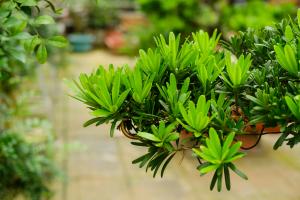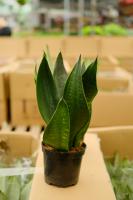How Long to Stake Newly Planted Trees
Planting trees in your garden or yard can be a great way to add beauty, shade, and value to your property. While planting trees is a simple process, ensuring that they grow strong, healthy, and straight can be more difficult. One solution to this problem is staking. Staking young trees can help them establish a strong root system, protect them from wind and other elements, and ensure they grow tall and straight. But how long should you stake newly planted trees? In this article, we’ll discuss this topic in detail.
The Purpose of Staking Trees
Staking is done to help young trees establish and maintain an upright position, which is essential for healthy growth. When a tree is newly planted, it does not yet have an extensive root system to anchor it firmly in the ground. As such, it is vulnerable to movement caused by wind, rain, and other elements. Staking a tree can help support its trunk and prevent it from bending or breaking under the weight of its own foliage or other environmental factors, which can lead to structural weakness and poor growth patterns.
In addition to providing stability, staking can also help young trees develop a stronger root system. By limiting their movement and exposure to external forces, staked trees can focus more of their energy on developing a strong, deep root system, which can help them thrive in the long-term.
When to Stake Newly Planted Trees
The ideal time to stake a newly planted tree is right after it is placed in the ground. This allows you to properly orient the tree and secure it in place before it has a chance to lean or settle. In general, trees that are planted in locations with high winds, heavy rain, or other environmental stressors may require staking. Trees with skinny trunks or top-heavy crowns may also need to be staked until they can support their own weight.
However, it is important to note that not all young trees need to be staked. Over-staking can actually be detrimental to a tree’s health and growth, as it can limit its natural movement and prevent it from developing the necessary strength and resilience to stand on its own. In general, staking is only necessary for trees that have a high risk of failure or damage.
How Long Should Trees Be Staked?
The length of time that a tree should be staked varies depending on several factors, including the species of tree, the size of the tree, the location of the tree, and the soil and climate conditions. In general, most trees need to be staked for at least one year after planting to ensure that they become rooted and establish a strong foundation. In some cases, trees may need to be staked for up to three years after planting in order to ensure proper growth and development.
Regardless of the duration of staking, it is important to monitor the tree regularly to ensure that the stake is not causing damage or hindering growth. The ties used to secure the tree should be checked on a regular basis to ensure that they are not cutting into the bark or branches. Additionally, once the stake is removed, it is important to monitor the tree for any signs of leaning or instability. If the tree begins to lean or buckle under its own weight, it may require additional support or corrective pruning to ensure that it grows straight and healthy.
Conclusion
Staking newly planted trees can be a great way to help them establish strong roots and grow straight and tall. However, staking should only be done when necessary, and for a limited amount of time. Monitoring the tree regularly is crucial to ensure that it is not being damaged by the stake or developing any issues with growth or stability. With proper care and attention, staked trees can thrive and become beautiful, healthy additions to any landscape.

 how many times do yo...
how many times do yo... how many planted tre...
how many planted tre... how many pine trees ...
how many pine trees ... how many pecan trees...
how many pecan trees... how many plants comp...
how many plants comp... how many plants can ...
how many plants can ... how many plants and ...
how many plants and ... how many pepper plan...
how many pepper plan...


































